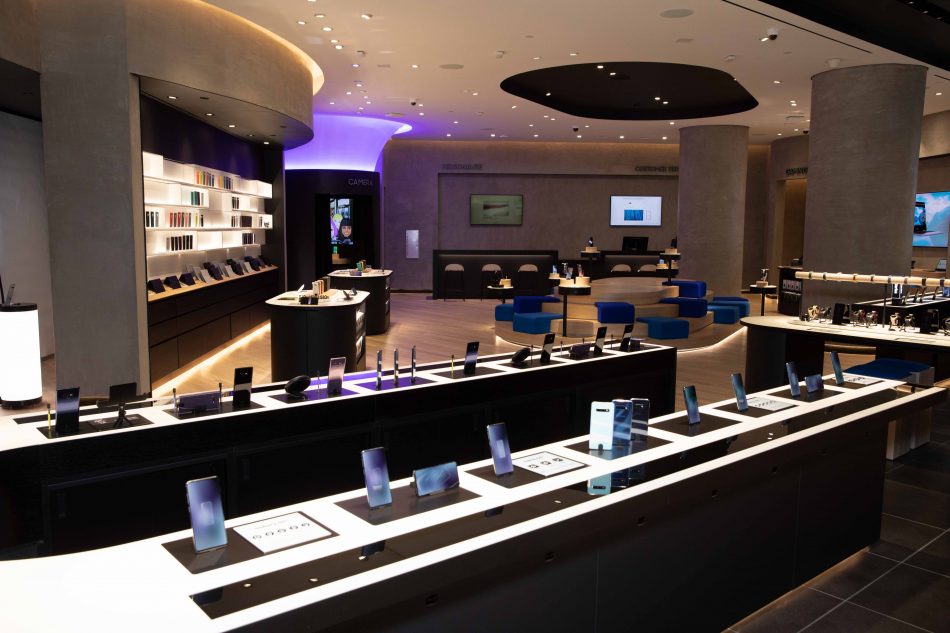The telecom industry is going through a transitional phase. With high customer expectations for exquisite fast service and the absolute harmony of the offline and online experience, their needs call for our attention and demand vital modifications of telecom stores.
Although the latter do leave the impression of the tech-savvy pioneer, executives from the top global telecoms admit they do not have well defined strategies in place that could enable them to reach their full potential. From finding a way to sync brick and mortar stores with their online presence to a lack of personalization and customer understanding, there are several challenges telecom stores urgently need to overcome.
How can telecoms improve this experience and reinvent their concept? There are several ways which will not only improve their shopability, but will also unleash creative opportunities for concept redevelopment.
Improve store experience through digitalization
With an ever-increasing number of customers requiring the latest applications and services at their fingertips, keeping them satisfied is becoming more and more difficult. To do so, telecom stores should focus on providing a seamless link between their online and offline services by migrating to a digital care of their customers, combined with an engaging in-store experience. Doing so, they can get a primary understanding of their customer which will enable them to offer a better experience once they visit the store. Using analytics, telecoms can identify customer’s preferences and pains and fine-tune personalized recommendations that will fit their needs. Once the customers visit the store, they will know which product they want without having to consult the staff. This, in turn, will save time for both parties, and prevent inaccurate mind guessing by both parties.
Besides saving time, an efficient digitalization can also help telecoms minimize costs by saving up on extensive personnel and human strength. Contributing to the overall store management, it will enable staff to locate products and check their availability immediately through digitalized devices, cutting the constant journeys to the warehouse. Besides being faster, they also won’t leave the customer waiting at any point.

Digitalization can also help minimize unecessary crowds and queing. If telecoms provide a top-notch online customer support, customers won’t have to physically visit the store for an answer they could have found online. AT&T, for example, uses AI chatbot that handles online customer interactions. At Comcast, on the other hand, customers can speak to a Talking Guide that interacts with users through voice-recognition AI. Although telecom stores are implementing digitalization, there is still a long way to go as only 15 percent of stores are digital from start to finish.
Reward loyalty

Besides improving customer service through digitalization, telecom stores should also start rewarding loyal customers. Currently, many players in the industry spend their marketing budgets on trying to acquire new customers instead of keeping the current customers happy. As a recent study shows that the second strategy brings long-term success and is much cheaper, telecoms should redefine their relationship with current customers and start rewarding their loyalty. Since more than half of customers want brick-and-mortar stores to offer lower prices with a store membership, telecoms should consider using referral bonuses, special disscounts and reward scheme programs. To encourage participation, they can collaborate with businesses that in sectors as sports, hospitality, or tourism. In this way, they will identify themselves as an experience provider and further humanise their service.
Meet individual needs by store differentiation

What else can be done? Besides awarding loyalty, telecoms can offer a more personalized experience by rethinking their store concept. Hence, although opening identical stores that are recognizable reflects a consistent brand image, this strategy can’t guarantee a truly personalized experience.
For instance, when entering a telecom store, customers often take a numbered piece of paper and queue until their number is announced, or just wait to be approached. Although this does bring structure to process, it can also lead to multiple frustrations: the feeling of insignificance, lack of personalized service, and no details on how long one will have to wait until being approached by staff.
With a lack of differentiation among customers who are interested in buying a new product, changing their contract, or looking to service their phone, rethinking the store format and strategy is necessary. For this reason, telecoms need to rethink how to meet a diverse set of customer needs and develop stores that differ based on what the customers seek to accomplish. Even if that means downsizing formats and closing outdated retail stores, it will enable telecoms to invest in stores that are more efficient while offering much more than the traditional format. Accenture suggests introducing few formats:
Experimental showrooms: these are large format stores where customers can experience products and new lines and test and touch the latest devices before buying them online
Full-service stores: these stores that should handle all support services with transactions, with a wide range of SKUs
Focused Kiosks: when a customer only wants to pick up and drop off their device for a repair, small focused kiosks are a good option as they provide both speed and convenience
Self-service outlets: focusing on the critical needs of customers, this type of store can be more customized to the local clientele and can be convenient if a customer just wants to pay bills and buy accessories
Using analytics, telecoms can determine which type of store is the most desirable for a specific target group. Doing so, they can greatly reduce store costs and increase interactivity.
Although going through a transitional phase, telecoms do have great potential for further development. Indeed, rewarding customer loyalty, improving the process through digitalization and offering personalized experience through store differentiation, are just some of the first steps on a path full of exciting innovations.
Are you curious to learn more? Through our integrated decision-making platform at StoreDNA, we help you deliver dramatically improved performance through better product assortments, store layouts, visual merchandising, and associate optimization. Learn more here.